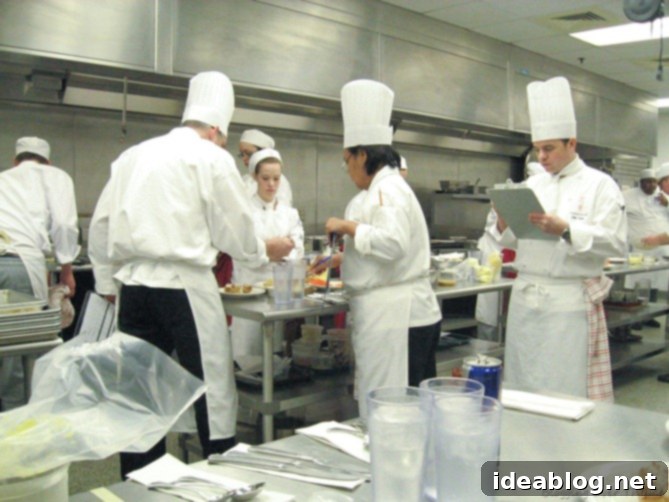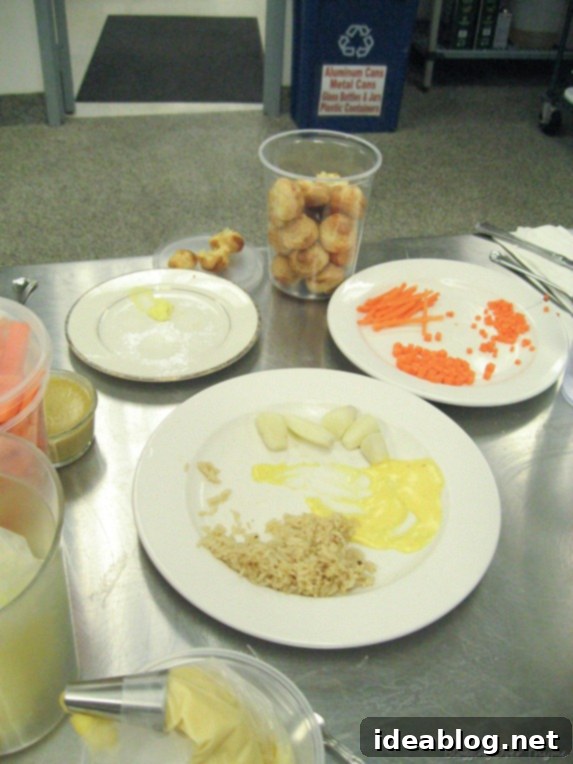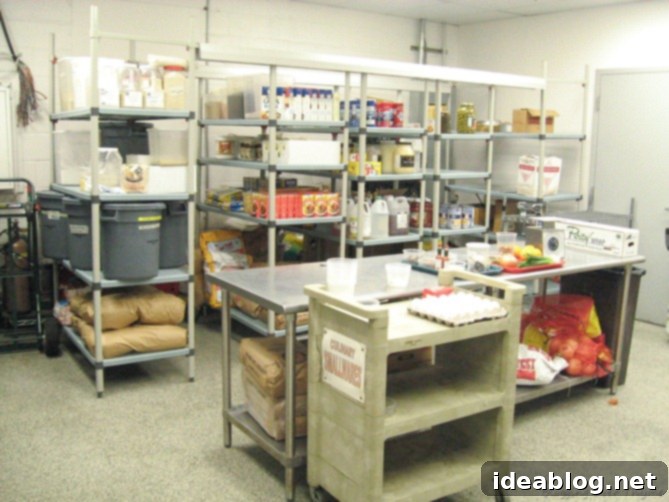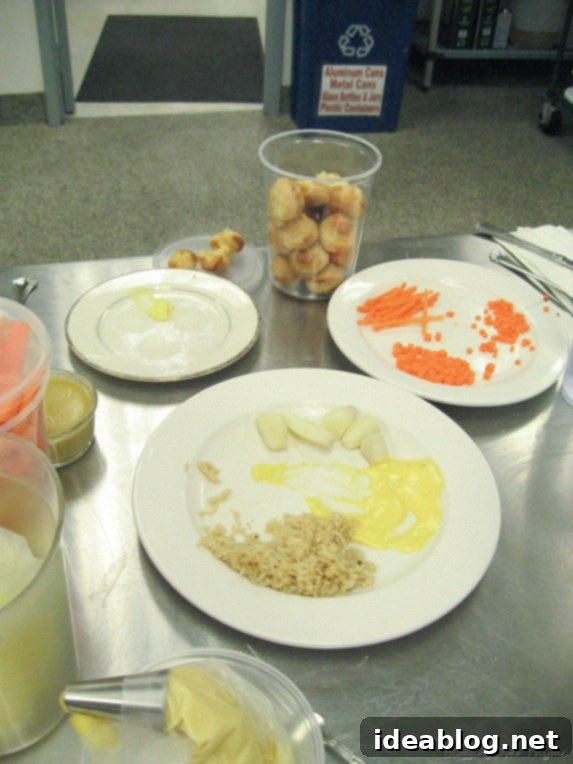My First Culinary School Exam: A Deep Dive into Practical Skills and Theory
The fourth week of my culinary education culminated in a milestone event: our first official practical and theory exam. This day had loomed large in my mind for weeks, almost from the moment I began the program. While our performance had been assessed daily since day one, this was the ultimate test. It marked the first formal occasion where we were solely responsible for creating multiple dishes or plate components, subjecting them to meticulous analysis, bite by bite, by our three highly experienced chef instructors. The pressure was palpable, a mix of intense nervousness and eager anticipation for this crucial evaluation of our foundational skills.

Fortunately, despite the inherent intimidation of a culinary school exam, we entered the kitchen with a fairly solid understanding of what might be expected of us. Upon our arrival at school on Thursday morning, we received a concise briefing outlining the day’s expectations, specific criteria for grading, and a final word of encouragement before we commenced. This initial guidance, though brief, helped to focus our minds and prepare for the intense culinary challenge ahead.
Due to the confidential nature of our curriculum, I am unable to disclose the exact dishes prepared for each exam. Instead, I will share general insights into my experience, the challenges I faced, and the invaluable lessons learned throughout the process.
The Practical Exam Challenge: Time, Temperature, and Precision
Our practical exam was a three-hour sprint against the clock, demanding not just speed but also meticulous planning and execution. We were tasked with completing all assigned components and having them perfectly plated within this strict timeframe. Once a student felt their work was ready, they would raise their hand, their name would be added to a judging queue on the whiteboard, and the chefs would evaluate their work in that order. This system introduced an additional layer of strategy, as multiple students might finish simultaneously, potentially placing you sixth or seventh in line. The critical challenge remained: regardless of when your turn came, every dish had to be presented at its optimal temperature and with ideal cooking consistency.
Mastering the “Holding” Component
This dynamic introduced a significant “holding” component to the exam, a facet of food production that I find to be the most demanding and stressful. Effective holding is about far more than simply keeping food warm; it’s a delicate art that impacts the final quality, texture, and taste of every element on the plate. It involves sophisticated timing—figuring out precisely when to initiate cooking for each ingredient to ensure everything reaches completion simultaneously. Moreover, it necessitates devising ingenious strategies to “hold” finished items without them becoming overcooked, dry, or otherwise compromised. Achieving perfect plating at the correct temperature and consistency, even after a potential delay, is a true testament to a chef’s skill. Thus, despite having a generous three hours, there was a strong incentive to complete the task efficiently and in a timely fashion, minimizing the holding period.
Comprehensive Grading Criteria: What Chefs Look For
Every single component we prepared was rigorously graded across multiple dimensions: consistency, taste, seasoning, presentation, temperature, and technique. These are the pillars of professional culinary arts, and the chefs scrutinized each aspect with an experienced eye. Consistency meant uniform cuts, even cooking, and predictable textures across all portions. Taste, of course, was paramount, evaluating the balance of flavors. Seasoning required an acute palate, ensuring dishes were neither under- nor over-seasoned. Presentation judged the visual appeal, artistry, and cleanliness of the plate. Temperature was critical, reflecting proper holding and service readiness. And technique assessed our mastery of fundamental culinary methods, from knife work to emulsification.
Beyond the dishes themselves, our performance extended to broader kitchen management. We were also evaluated on our overall efficient use of ingredients, a crucial skill for minimizing waste and controlling costs in a professional setting. Sanitation protocols were strictly observed, ensuring a clean and hygienic working environment. Organization within our workstation and during our workflow was assessed for efficiency and safety. Professionalism throughout the exam, including demeanor and adherence to kitchen etiquette, was paramount. Finally, our overall clean-up during and after the exam was meticulously observed, reinforcing the importance of leaving a kitchen spotless.

My plates after receiving critical feedback from the chef instructors!
Facing the Judges: My Performance and Lessons Learned
The Moment of Truth
The intensity of the exam reached its peak when it was time for judgment. Remarkably, I was the first student in my class to signal completion, ready for my food to undergo scrutiny by our esteemed chefs. This was, undeniably, the most nerve-wracking part of the entire experience. As all three chefs converged on my station, clipboards in hand, they began a systematic deconstruction of my dishes. They meticulously picked apart each element, conversing amongst themselves and occasionally offering direct feedback to me throughout the process. I confess, at this point, a wave of nausea swept over me—the raw vulnerability of having your work analyzed so thoroughly by masters of the craft is truly humbling.
Strengths and Successes: A Glimpse of Progress
While official grades are still pending, I am largely content with my performance, recognizing significant areas of strength and improvement. The chefs were particularly pleased with my knife skills, a fundamental yet challenging aspect of culinary training. My tourneed vegetables, a classic and technically demanding cut, were executed better than they ever had been during my practice sessions at home—a huge relief and a testament to focused effort. My sauce also earned commendation; it maintained a perfect emulsion, showing no signs of breaking, and had a desirable consistency. These achievements, particularly under pressure, provided a valuable confidence boost and affirmed the progress I’ve made in essential culinary techniques.
Learning from Mistakes: Fueling Future Growth
However, the critique wasn’t without its constructive points. While my sauce’s emulsion was excellent, I had unfortunately added a touch too much cayenne pepper. This was one of those mistakes I acutely recognized in the moment (having grabbed an overly generous pinch) and fully anticipated being called out on. In hindsight, I chastised myself for not taking a spoon to skim some off before whisking it thoroughly, making it irreversible. My vinaigrette, too, possessed good flavor initially, but a regrettable consequence of waiting approximately an hour before judging was that it started to break slightly, compromising its perfect emulsification. This highlighted the unforgiving nature of the “holding” component.
On a positive note, the chefs praised my organization, cleanliness, and fluid movement throughout the kitchen, acknowledging my efficient and professional approach to the workspace. Despite these commendations, I harbored a slight disappointment over what felt like “stupid mistakes” during the exam. Yet, I am consciously striving to shift my focus from regret to growth. These missteps, such as boiling a potato for an extra minute or that heavy-handed pinch of cayenne, are straightforward improvements that offer immediate, tangible lessons for the next practical exam – a prospect I already feel a familiar pang of anxiety about. It’s not the end of the world, but rather a vital part of the continuous learning curve in culinary arts.

Beyond the Stove: Theory and Community Engagement
The Theory Exam: Reinforcing Knowledge
After the practical whirlwind, the entire class converged to meticulously clean and sanitize the kitchen, an integral part of professional culinary practice. Following a brief but much-needed respite, we transitioned to our theory exam. This assessment took the form of short-answer questions, covering all the techniques, recipes, and foundational information we had absorbed over the preceding four weeks. This segment of the examination felt comparatively straightforward, providing a reassuring conclusion to a day filled with intense pressure and tangible challenges. It served as a valuable reinforcement that practical skill must always be underpinned by a solid understanding of culinary principles.
Volunteering for a Winter Smoke & Grill Demonstration Class
The culinary journey, however, extended beyond formal exams. In addition to our academic commitments, several students and I enthusiastically began preparing the mise en place for a “Winter Smoke & Grill” recreational demonstration class scheduled for tonight. In fact, I’m just about to head back to school to volunteer my assistance for this exciting event! This class promises to be a fascinating exploration of advanced culinary techniques and innovative dishes. We’re immersed in the preparation of a diverse menu, featuring intriguing items such as smoked goose, the refreshingly unique mole granita, and delicate homemade ramen noodles. Volunteering for such events is an invaluable opportunity to gain exposure to different culinary styles, learn from experienced chefs like Chef Brian, and further hone our organizational and preparation skills in a dynamic, real-world setting.
This demonstration promises to be both highly informative and incredibly enjoyable. I’ll be arriving at 4 pm to assist Chef Brian with final preparations for the 7:00-10:00 pm class. I anticipate a substantial clean-up effort afterward, so here’s hoping I don’t arrive home too late. Tomorrow, however, will be dedicated to a much-deserved celebration: Connor’s 24th birthday!
Hope you are all enjoying the weekend!
